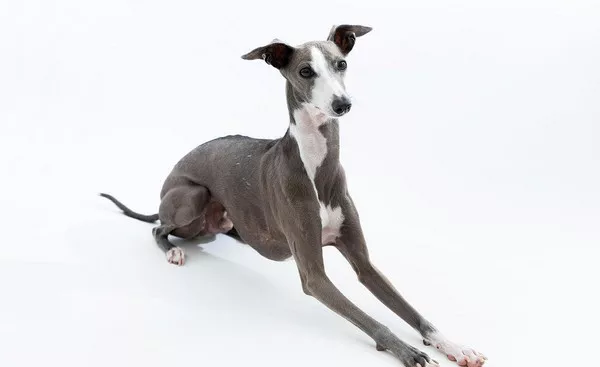Sun conures are vibrant, playful, and intelligent birds that make beloved companions for many bird enthusiasts. One common concern owners might face is noticing that their sun conure’s beak appears to be peeling or flaking. While this can be alarming at first, it’s important to understand that a certain degree of peeling is normal for parrots, including sun conures. However, in some cases, peeling may indicate underlying health issues that require attention.
In this article, we’ll dive into the anatomy of a sun conure’s beak, the reasons behind peeling, when to seek professional help, and how to keep your feathered friend’s beak in optimal condition.
Understanding the Anatomy of a Sun Conure’s Beak
A bird’s beak is a remarkable structure made up of several layers, each playing a crucial role in the bird’s overall health and daily functioning. The beak is composed of two main parts:
The Upper Beak (Maxilla): The upper portion of the beak, which overlaps the lower section.
The Lower Beak (Mandible): The bottom part, which fits neatly against the upper beak.
The outer surface of the beak is covered with a keratin layer called the rhamphotheca. Keratin is the same protein found in human hair and nails. This layer constantly grows throughout a bird’s life and is naturally worn down through eating, chewing, and other daily activities. Beneath the keratin layer are bone and vascular tissues that support the beak and keep it healthy.
Since the keratin layer is continually renewed, slight peeling or flaking of the outermost layer is generally part of a healthy renewal process. However, when peeling is excessive or accompanied by other symptoms, it could signal an issue that needs attention.
Reasons for Beak Peeling in Sun Conures
There are several reasons why a sun conure’s beak may be peeling. These can range from normal shedding processes to nutritional deficiencies or infections. Let’s explore these in detail:
1. Normal Beak Growth and Renewal
Peeling is often part of the natural cycle of keratin renewal. Just like human nails grow and may sometimes flake, a bird’s beak undergoes a similar process. The outermost layer of keratin may peel slightly, revealing a smoother and shinier layer beneath. This is especially noticeable if your bird is active and regularly uses its beak to chew toys, eat hard foods, or climb.
How to Tell if It’s Normal:
- The peeling is minimal and occurs on the surface.
- There are no cracks, discoloration, or changes in the bird’s behavior.
- The bird continues to eat, preen, and play as usual.
2. Nutritional Deficiencies
A healthy diet is essential for maintaining your sun conure’s beak. Nutritional imbalances, particularly deficiencies in vitamins and minerals, can weaken the keratin structure, causing excessive peeling or flaking. Key nutrients for beak health include:
Vitamin A: Vital for maintaining the integrity of skin and keratinized tissues.
Calcium: Crucial for beak strength and overall bone health.
Protein: Necessary for keratin production.
Signs of Nutritional Deficiency:
- Excessive beak peeling or soft spots.
- Discoloration (e.g., pale or dark patches on the beak).
- Lethargy or changes in behavior.
- Dull or brittle feathers.
What You Can Do:
Ensure your sun conure’s diet includes a variety of fresh fruits, vegetables (especially leafy greens), fortified pellets, and occasional seeds. Foods like carrots, sweet potatoes, and leafy greens are rich in vitamin A and can promote healthier beak tissue.
3. Dehydration or Dry Environments
A dry environment can contribute to peeling beaks. Just as human skin can become dry and flaky in low humidity, a bird’s beak may show similar effects. Sun conures, native to tropical regions, thrive in environments with higher humidity levels.
Signs of Dryness:
- Flaking that is more pronounced during colder or drier seasons.
- Dry skin on other parts of the body, such as the feet.
What You Can Do:
- Use a humidifier to maintain a humidity level of 50-70% in your bird’s environment.
- Provide opportunities for your bird to bathe, such as a shallow dish of water or misting with a spray bottle.
4. Overgrown Beak or Malocclusion
If the beak is not worn down properly through regular activity, it can grow unevenly, leading to peeling or cracking. Overgrown beaks may result from a lack of abrasive surfaces or toys for the bird to chew on.
Signs of an Overgrown Beak:
- Uneven growth or length of the upper and lower beak.
- Difficulty eating or handling food.
- Visible peeling along the edges.
What You Can Do:
Offer chewable toys and natural wood perches that encourage your bird to engage its beak. If the beak is already overgrown, consult an avian vet for trimming.
5. Trauma or Injury
A bird may injure its beak during play, fights with other birds, or accidental collisions. Even minor injuries can cause peeling as the beak repairs itself.
Signs of Trauma:
- Sudden peeling or cracking after a noticeable incident.
- Sensitivity or reluctance to use the beak.
- Visible cracks or chips.
What You Can Do:
Inspect the beak carefully. If the injury seems minor and your bird is behaving normally, the beak may heal on its own. For deeper cracks or persistent peeling, seek veterinary care.
6. Infections or Parasites
Fungal, bacterial, or parasitic infections can affect the beak, causing it to peel, weaken, or become deformed. Scaly face mites (Knemidokoptes spp.) are a particular concern for parrots, as they burrow into the skin and beak, causing visible damage.
Signs of Infection or Parasites:
- Irregular peeling or crusty buildup.
- Discoloration or soft areas on the beak.
- Changes in eating or behavior.
- Visible mites or scaly patches.
What You Can Do:
Infections and parasites require prompt veterinary intervention. Your avian vet can prescribe appropriate medications to address the issue.
7. Exposure to Chemicals or Toxins
Sun conures are curious by nature and may chew on household items containing harmful chemicals, such as cleaning agents, paints, or treated wood. These toxins can damage the keratin layer, leading to peeling.
Signs of Chemical Exposure:
- Sudden onset of peeling or discoloration.
- Signs of illness, such as lethargy, vomiting, or respiratory distress.
What You Can Do:
Keep your bird’s environment free of toxic substances and ensure all toys and perches are made from bird-safe materials. If you suspect poisoning, contact an avian vet immediately.
When to See a Vet
While minor peeling is usually harmless, there are situations where veterinary care is essential. Seek help if you notice:
- Excessive or deep peeling that doesn’t improve.
- Discoloration, such as yellow, black, or white spots.
- Cracks or deformities.
- Behavioral changes, such as reduced appetite or activity.
- Signs of pain, such as vocal distress when using the beak.
Tips for Maintaining a Healthy Beak
To ensure your sun conure’s beak stays in excellent condition, follow these tips:
Provide a Balanced Diet:
- Incorporate a variety of fresh fruits, vegetables, and high-quality pellets.
- Avoid over-reliance on seeds, which are high in fat but low in essential nutrients.
Encourage Natural Wear:
- Offer natural wood perches and a variety of chewable toys.
- Include hard foods like nuts (unsalted) or cuttlebones to promote beak maintenance.
Maintain Proper Hygiene:
- Clean food and water dishes daily.
- Regularly clean the cage and toys to prevent bacterial growth.
Monitor Environmental Conditions:
- Keep the humidity at an appropriate level for your bird’s comfort.
- Avoid sudden temperature fluctuations or exposure to drafts.
Regular Checkups:
- Schedule annual checkups with an avian veterinarian.
- Perform weekly visual inspections of your bird’s beak, feathers, and overall health.
Conclusion
While a peeling beak in a sun conure is often a natural process, it’s essential to stay vigilant and address any underlying causes that may contribute to excessive peeling. By providing a balanced diet, maintaining a stimulating environment, and seeking veterinary advice when needed, you can ensure your feathered friend stays healthy and happy.
Your sun conure’s beak is a vital tool for eating, climbing, and exploring its world. With proper care, it will remain strong, functional, and beautiful—just like your vibrant avian companion.
Related Topics:
























